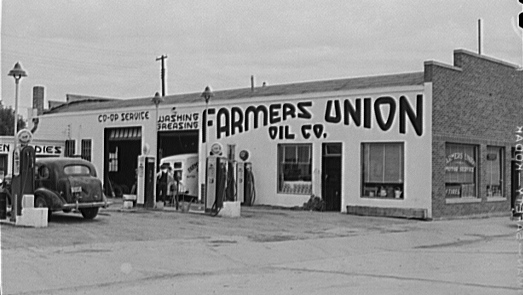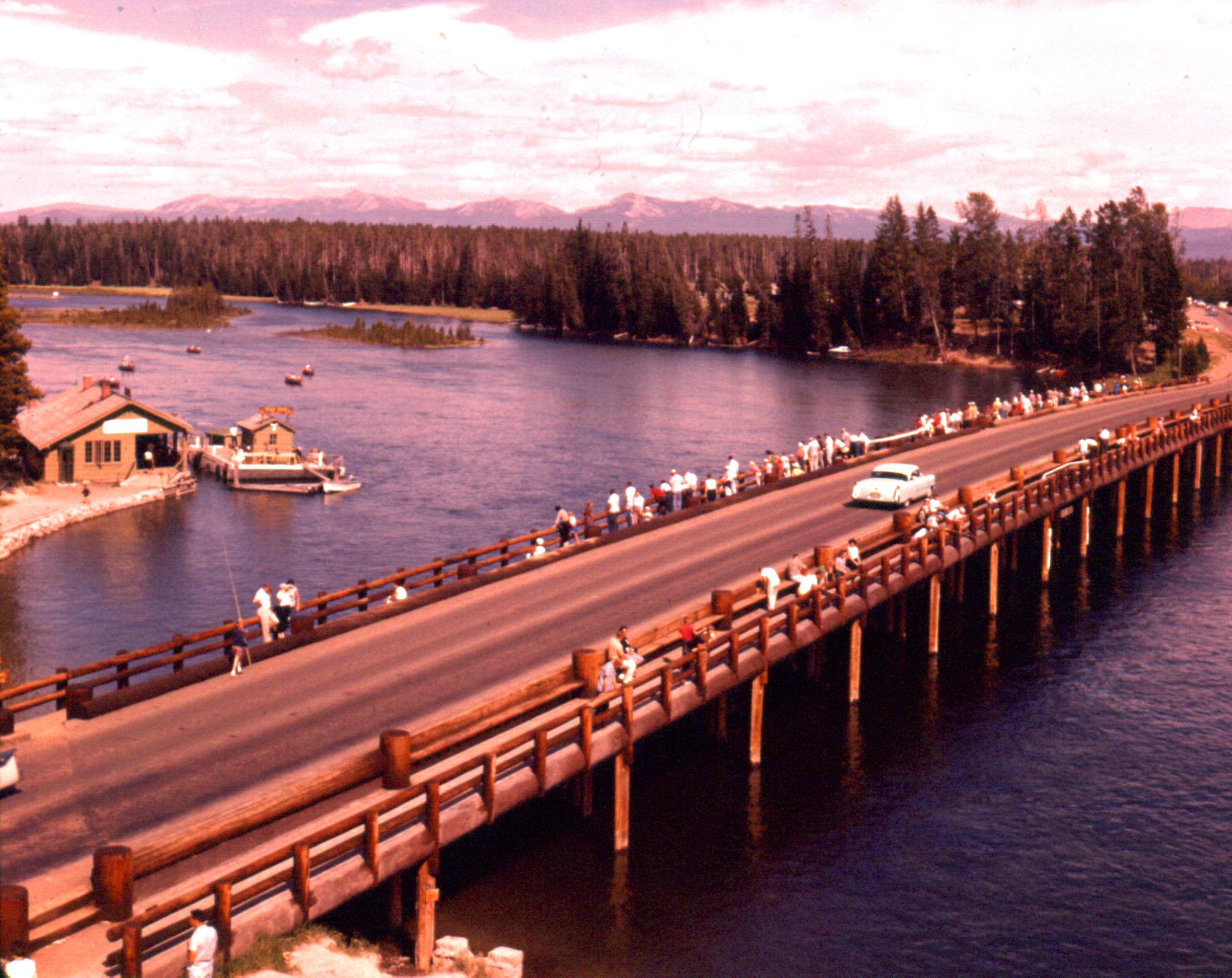|
Missouri-Yellowstone Confluence Interpretive Center
The Missouri-Yellowstone Confluence Interpretive Center is a museum near Williston, North Dakota. It is dedicated to telling the story of the confluence of the Yellowstone and the Missouri Rivers in the western section of North Dakota near the Montana border. It features exhibits on the geography, geology, and history of the area. The interpretive center is located one-half mile east of historic Fort Buford near Williston, North Dakota. It also offers dramatic views of the Missouri and Yellowstone Rivers. Permanent exhibits The center offers a . gallery showcasing the history of the confluence. Featured exhibits are about the Corps of Discovery and their experiences in the area, Fort Buford, Fort Union and the fur-trade industry, and the development of transportation along the rivers. See also * Fort Union Trading Post National Historic Site * Fort Buford External linksMissouri-Yellowstone Confluence Interpretive Center- official website History museums in North ... [...More Info...] [...Related Items...] OR: [Wikipedia] [Google] [Baidu] |
Williston, North Dakota
Williston is a city in and the county seat of Williams County, North Dakota, United States. The 2020 census gave its population as 29,160, making Williston the sixth-largest city in North Dakota. The city's population nearly doubled between 2010 and 2020, due largely to the North Dakota oil boom. Williston's newspaper is the daily ''Williston Herald''. Williston is the home of Williston State College and the Miss North Dakota Scholarship Pageant. History Founded in 1887, Williston was named for Daniel Willis James, a merchant and capitalist, by his friend, railroad magnate James J. Hill. Geography Williston is located at the crossroads of U.S. Highways 2 and 85, near the confluence of the Yellowstone and Missouri rivers, at the upper end of the Lake Sakakawea reservoir. According to the United States Census Bureau, the city has a total area of , of which is land and is water. The municipality is from the Montana-North Dakota border and from the Canadian border. Clim ... [...More Info...] [...Related Items...] OR: [Wikipedia] [Google] [Baidu] |
Yellowstone River
The Yellowstone River is a tributary of the Missouri River, approximately long, in the Western United States. Considered the principal tributary of upper Missouri, via its own tributaries it drains an area with headwaters across the mountains and Great Plains, high plains of southern Montana and northern Wyoming, and stretching east from the Rocky Mountains in the vicinity of Yellowstone National Park. It flows northeast to its confluence with the Missouri River on the North Dakota side of the border, about 25 miles west of present-day Williston, North Dakota, Williston. Yellowstone watershed The Yellowstone River watershed is a river basin spanning across Montana, with minor extensions into Wyoming and North Dakota, toward headwaters and terminus, respectively. The Yellowstone Basin watershed contains a system of rivers, including the Yellowstone River, and four tributary basins: the Clarks Fork Yellowstone, Wind River (Wyoming), Wind River and Bighorn River, Tongue River (Mon ... [...More Info...] [...Related Items...] OR: [Wikipedia] [Google] [Baidu] |
North Dakota
North Dakota () is a U.S. state in the Upper Midwest, named after the Native Americans in the United States, indigenous Dakota people, Dakota Sioux. North Dakota is bordered by the Canadian provinces of Saskatchewan and Manitoba to the north and by the U.S. states of Minnesota to the east, South Dakota to the south, and Montana to the west. It is believed to host the geographic center of North America, Rugby, North Dakota, Rugby, and is home to the tallest man-made structure in the Western Hemisphere, the KVLY-TV mast. North Dakota is the List of U.S. states and territories by area, 19th largest state, but with a population of less than 780,000 2020 United States census, as of 2020, it is the List of U.S. states and territories by population, 4th least populous and List of U.S. states by population density, 4th most sparsely populated. The capital is Bismarck, North Dakota, Bismarck while the largest city is Fargo, North Dakota, Fargo, which accounts for nearly a fifth of the s ... [...More Info...] [...Related Items...] OR: [Wikipedia] [Google] [Baidu] |
Montana
Montana () is a state in the Mountain West division of the Western United States. It is bordered by Idaho to the west, North Dakota and South Dakota to the east, Wyoming to the south, and the Canadian provinces of Alberta, British Columbia, and Saskatchewan to the north. It is the fourth-largest state by area, the eighth-least populous state, and the third-least densely populated state. Its state capital is Helena. The western half of Montana contains numerous mountain ranges, while the eastern half is characterized by western prairie terrain and badlands, with smaller mountain ranges found throughout the state. Montana has no official nickname but several unofficial ones, most notably "Big Sky Country", "The Treasure State", "Land of the Shining Mountains", and " The Last Best Place". The economy is primarily based on agriculture, including ranching and cereal grain farming. Other significant economic resources include oil, gas, coal, mining, and lumber. The health ca ... [...More Info...] [...Related Items...] OR: [Wikipedia] [Google] [Baidu] |
Fort Buford
Fort Buford was a United States Army Post at the confluence of the Missouri and Yellowstone rivers in Dakota Territory, present day North Dakota, and the site of Sitting Bull's surrender in 1881.Ewers, John C. (1988): "When Sitting Bull Surrendered His Winchester". ''Indian Life on the Upper Missouri''. Norman and London. Pp. 175-181. Company C, 2nd Battalion, 13th Infantry, 3 officers, 80 enlisted men and 6 civilians commanded by Capt. (Brevet Lt. Col.) William G. Rankin, first established a camp on the site on June 15, 1866, with orders to build a post, the majority of which was built using adobe and cottonwood enclosed by a wooden stockade. The fort was named after the late Major General John Buford, a Union Army cavalry general during the American Civil War. Lakota attacks The second night after arrival the camp was attacked by a band of the Hunkpapa Lakota led by Sitting Bull, they were driven off with one soldier wounded. The next day, the same group attacked and attem ... [...More Info...] [...Related Items...] OR: [Wikipedia] [Google] [Baidu] |
Corps Of Discovery
The Corps of Discovery was a specially established unit of the United States Army which formed the nucleus of the Lewis and Clark Expedition that took place between May 1804 and September 1806. The Corps was led jointly by Captain Meriwether Lewis and Second Lieutenant William Clark. Commissioned by President Thomas Jefferson, the Corps' objectives were scientific and commercial – to study the area's plants, animal life, and geography, and to learn how the Louisiana Purchase could be exploited economically. Aside from its military composition, the Corps' additional personnel included scouts, boatmen, and civilians. On its two year expedition through the Great Plains and the Rocky Mountains, the Corps encountered more than two dozen Native American tribes. Modern research now acknowledges that without such contact or help, the Corps of Discovery would have struggled to have completed their journey. History The foundations for the Corps of Discovery were laid when Thomas Jefferso ... [...More Info...] [...Related Items...] OR: [Wikipedia] [Google] [Baidu] |
Fort Union Trading Post National Historic Site
Fort Union Trading Post National Historic Site is a partial reconstruction of the most important fur trading post on the upper Missouri, 1829-1867. The fort site is about two miles from the confluence of the Missouri River and its tributary, the Yellowstone River, on the Dakota side of the North Dakota/Montana border, 25 miles from Williston, North Dakota. In 1961, the site was designated by the Department of Interior as one of the earliest declared National Historic Landmarks in the United States.Roy A. Matteson (October 5, 1951) , National Park Service and The National Park Service formally named it as Fort Union Trading Post to differentiate it from Fort Union National Monument, a historic frontier Army post in New Mexico. The historic site interprets how portions of the fort may have looked in 1851, based on archaeological excavations and contemporary drawings. Among the sources were drawings by Swiss artist Rudolf Kurz, who worked as the post clerk in 1851. History Fort ... [...More Info...] [...Related Items...] OR: [Wikipedia] [Google] [Baidu] |
History Museums In North Dakota
History (derived ) is the systematic study and the documentation of the human activity. The time period of event before the invention of writing systems is considered prehistory. "History" is an umbrella term comprising past events as well as the memory, discovery, collection, organization, presentation, and interpretation of these events. Historians seek knowledge of the past using historical sources such as written documents, oral accounts, art and material artifacts, and ecological markers. History is not complete and still has debatable mysteries. History is also an academic discipline which uses narrative to describe, examine, question, and analyze past events, and investigate their patterns of cause and effect. Historians often debate which narrative best explains an event, as well as the significance of different causes and effects. Historians also debate the nature of history as an end in itself, as well as its usefulness to give perspective on the problems o ... [...More Info...] [...Related Items...] OR: [Wikipedia] [Google] [Baidu] |
Natural History Museums In North Dakota
Nature, in the broadest sense, is the physical world or universe. "Nature" can refer to the phenomena of the physical world, and also to life in general. The study of nature is a large, if not the only, part of science. Although humans are part of nature, human activity is often understood as a separate category from other natural phenomena. The word ''nature'' is borrowed from the Old French ''nature'' and is derived from the Latin word ''natura'', or "essential qualities, innate disposition", and in ancient times, literally meant " birth". In ancient philosophy, ''natura'' is mostly used as the Latin translation of the Greek word '' physis'' (φύσις), which originally related to the intrinsic characteristics of plants, animals, and other features of the world to develop of their own accord. The concept of nature as a whole, the physical universe, is one of several expansions of the original notion; it began with certain core applications of the word φύσις by ... [...More Info...] [...Related Items...] OR: [Wikipedia] [Google] [Baidu] |
Museums In Williams County, North Dakota
A museum ( ; plural museums or, rarely, musea) is a building or institution that cares for and displays a collection of artifacts and other objects of artistic, cultural, historical, or scientific importance. Many public museums make these items available for public viewing through exhibits that may be permanent or temporary. The largest museums are located in major cities throughout the world, while thousands of local museums exist in smaller cities, towns, and rural areas. Museums have varying aims, ranging from the conservation and documentation of their collection, serving researchers and specialists, to catering to the general public. The goal of serving researchers is not only scientific, but intended to serve the general public. There are many types of museums, including art museums, natural history museums, science museums, war museums, and children's museums. According to the International Council of Museums (ICOM), there are more than 55,000 museums in 202 countr ... [...More Info...] [...Related Items...] OR: [Wikipedia] [Google] [Baidu] |





.jpg)
.jpg)